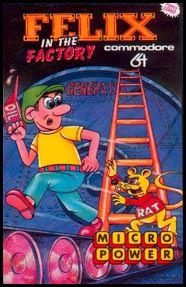
Donkey Kong Jr. is a 1982 arcade platform game that was released by Nintendo. It is the sequel to Donkey Kong, but with the roles reversed compared to its predecessor: Mario is now the villain and Donkey Kong Jr. is trying to save his kidnapped father. It first released in arcades and, over the course of the decade, was released for a variety of home platforms. The game's title is written out as Donkey Kong Junior in the North American arcade version and various conversions to non-Nintendo systems.

Citadel is a computer game developed by Michael Jakobsen for the BBC Micro, and released by Superior Software in 1985. It was also ported to the Acorn Electron. Centred around a castle, this platform game with some puzzle-solving elements requires players to find five hidden crystals and return them to their rightful place. It also features some outside areas external to the castle.

Frak! is a scrolling platform video game programmed by Nick Pelling for the BBC Micro and Acorn Electron and published by his own Aardvark Software in 1984. It was ported to the Commodore 64 the following year by "The B Team". The BBC and Electron versions were included on the Superior Software compilation Play It Again Sam 4 in 1987 and re-issued in budget form by Alternative Software in 1989.
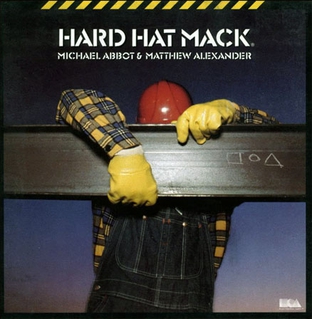
Hard Hat Mack is a platform game developed by Michael Abbot and Matthew Alexander for the Apple II which was published by Electronic Arts in 1983. Ports for the Atari 8-bit computers and Commodore 64 were released simultaneously. It is part of the first batch of five games from Electronic Arts, and the company called it out as "truly EA's first game." Versions for the Amstrad CPC and IBM PC compatibles followed in 1984.
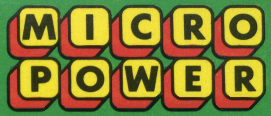
Micro Power was a British company established in the early 1980s by former accountant Bob Simpson. The company was best known as a video game publisher, originally under the name Program Power. It also sold many types of computer hardware and software through its Leeds 'showroom' or via mail order.
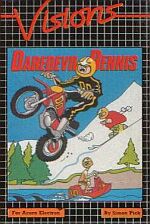
Daredevil Dennis is a computer game published by Visions Software in 1984 for the Acorn Electron and BBC Micro. Both the controls and screen layout are the same as in Atari's 1977 Stunt Cycle arcade game. Daredevil Dennis: The Sequel was published by Visions Software for the Commodore 64, but was still simply called Daredevil Dennis on the cover.
Crazy Kong is an arcade game developed by Falcon, released in 1981 and similar to Nintendo's Donkey Kong. Although commonly believed to be a bootleg version, it was officially licensed for operation only in Japan when Nintendo couldn't keep up with domestic demand, and is based on different hardware. It retains all the gameplay elements of Donkey Kong, but its graphics were redrawn and re-colorized. Falcon breached their contract by exporting the cabinets overseas, leading Nintendo to revoke the license in January 1982. Like the original game, Crazy Kong had bootleg versions under such titles as Congorilla, Big Kong, Donkey King and Monkey Donkey.

Space Panic is a 1980 arcade video game developed by Universal. Predating Nintendo's Donkey Kong, and lacking a jump mechanic, Space Panic was the first game involving climbing ladders between walkable platforms. The genre was initially labeled "climbing games", but later became known as platform games. A ColecoVision port by CBS Electronics was released in the winter holiday season of 1982.

Game & Watch Gallery 3 is a video game developed by Tose and released by Nintendo for the Game Boy Color in 1999. It is the fourth game in the Game & Watch Gallery series, containing five remastered games from the Game & Watch line of Nintendo handheld games.

Blagger is a platform game created by Antony Crowther for the Commodore 64 and released by Alligata in 1983. A BBC Micro port was released the same year, Acorn Electron, Amstrad CPC and MSX in 1984, Commodore 16 and Plus/4 in 1985 and Amstrad PCW in 1987. In some countries this game was released under the name Gangster.

Boffin is a platform game published in 1985 by Addictive Games for the Acorn Electron and BBC Micro. It was written by 17-year-old Paul Julian O'Malley, who at the time was a resident of Romsey, Hampshire, UK.

Palace of Magic is a platform game released on 1 November 1987 for the Acorn Electron and BBC Micro by Superior Software. Combining platform elements with problem solving, it similar gameplay to the earlier Citadel. Both are early examples of the Metroidvania genre.

Mr. Robot and His Robot Factory is a platform game created for Atari 8-bit computers by Ron Rosen and published in 1983 by Datamost. The music was composed by Gary Gilbertson using Philip Price's Advanced Music Processor, while the title screen was drawn by Art Huff. It was ported to the Apple II by Robert McNally and to the Commodore 64.

Turmoil is a platform game released in 1984 for the ZX Spectrum, and in 1986 for the MSX by Bug Byte. The player takes control of Mechanic Mick who has been employed by a rich Arabian Sheikh. The Sheikh has refused to pay Mick for work done, so Mick decides to steal his collection of expensive cars in lieu of payment. He must build the cars by collecting oil from a dripping oil tank. The oil can also be used as an offensive weapon against the pursuing Arabian guards.
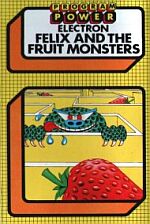
Felix and the Fruit Monsters is a video game written by John Chaytor and released by Micro Power for the BBC Micro and Acorn Electron in 1983. A sequel to platformer Felix in the Factory, it is a maze game resembling Pac-Man, but with different gameplay.

Mario vs. Donkey Kong: Mini-Land Mayhem! is a 2010 puzzle-platform game developed by Nintendo Software Technology for the Nintendo DS. The game was released in North America on November 14, 2010 and is the fourth entry in the Mario vs. Donkey Kong series.

Jet-Boot Jack is a platform game written by Jon Williams for Atari 8-bit computers and published by English Software in 1983. It was ported to the Acorn Electron, Amstrad CPC, BBC Micro, and Commodore 64. A C64-only sequel, Legend of the Knucker-Hole, was released in 1984.
Magic Mushrooms is a platform game published in 1985 by Acornsoft for the Acorn Electron and BBC Micro home computers. It includes a built-in level editor.
